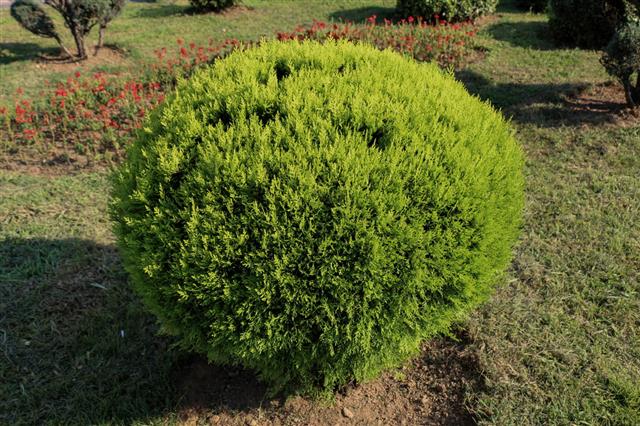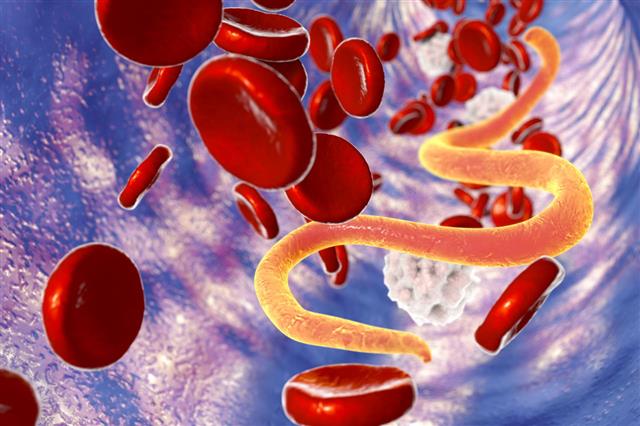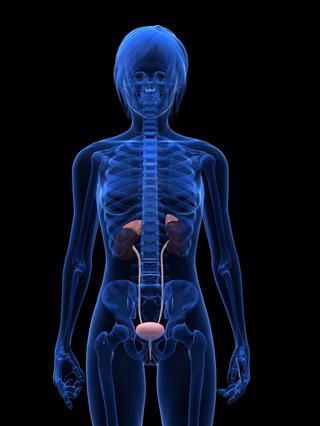
In simple words, osmosis is the transfer of water to even the balance between a weak and a strong solution. The end result of this process is equal amounts of water on both sides of the barrier, creating a state known as ‘isotonic’.
What is Osmosis?
Osmosis is the movement of water molecules from solution with lower solute concentration (hypotonic solution) to the solution with higher solute concentration (hypertonic solution) through a selectively permeable membrane. The movement takes place due to the osmotic gradient created by difference in concentration of the solutions on both sides of the membrane and the end result is a state where osmotic equilibrium is reached wherein movement of the fluid ceases.
Examples of Osmosis
Example: Two containers A and B are filled with equal volume of water and are separated by a membrane that allows water to pass freely, but prohibits passage of solute molecules. Solution A has 3 molecules of albumin protein (molecular weight 66,000) and Solution B has 15 molecules of glucose (molecular weight 180). Now let’s determine the following: first, into which compartment water will flow, and second, will there be any movement of water?
In this example of osmosis, water will flow from container A to container B because solution B has higher concentration of solute particles than solution A. Osmotic flow of water is independent of the size of solute molecules.
Example: Fill two containers with water and separate them with a selectively permeable membrane. Solution A contains 100 g of table salt and solution B contains 100 g of glucose. In which direction will the water move? The molar concentration of table salt or NaCl and glucose is the same. In this case, NaCl dissociates into Na+ and Cl- ions, which increases the concentration of solute particles. Therefore solution A became hypertonic and water flows from solution B to solution A.
Osmosis in the Body
Salts and minerals from water are transferred through osmosis. Water flows through the plasma membrane of cells and due to osmosis, concentration of water, glucose and salt is maintained inside the body. It is important in preventing cell damage.
Osmosis and Saltwater Fish
Saltwater fish are adapted to high saline water bodies. Since, salt concentration of the water is higher than the fish, the excess salt in the surrounding water draws water from the body of the fish. This is how osmosis is regulated.
Osmosis and Freshwater Fish
Freshwater fish maintain fluid balance in their body through osmosis. Since the salt concentration in their body is higher than the surrounding water, they do not need to drink water. This is because water is spontaneously absorbed by the salt present in their body.
Osmosis plays a very important role in human life as it helps in the proper functioning of the kidneys. It occurs in the kidneys to recover water from the waste materials of the body.
Dialysis as an Example of Osmosis
Kidney dialysis is an example of osmosis. It is for patients suffering from kidney diseases. In this process, the dialyzer removes waste products from a patient’s blood through a dialyzing membrane, and passes them into the dialysis solution tank. The red blood cells being larger in size cannot pass through the membrane and are retained in the blood. Thus, by the process of osmosis waste materials are continuously removed from the blood.
Osmosis Examples in Daily Life
When your hands are immersed in dishwater for a long time, your skin looks bloated. This is an effect of osmosis.
When you pour salt onto a slug, water diffuses and slug shrinks as a result of osmosis.
When you cook food and put sauce in the liquid part of your dish, some part of the solute moves inside the solid part of the food you are cooking. The solid part could be an egg, piece of meat but the sauce is made of solute and not water, so it will move into the food.
Osmosis plays an important part in the body. It helps in the transfer of water and various nutrients between blood and fluid of cells.
Plants also use osmosis to take in water and minerals essential for its growth.
Reverse osmosis is a type of osmosis which is used to convert sewage water into clean drinking water.
















